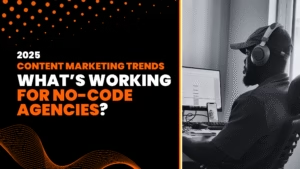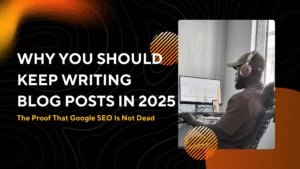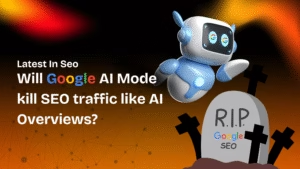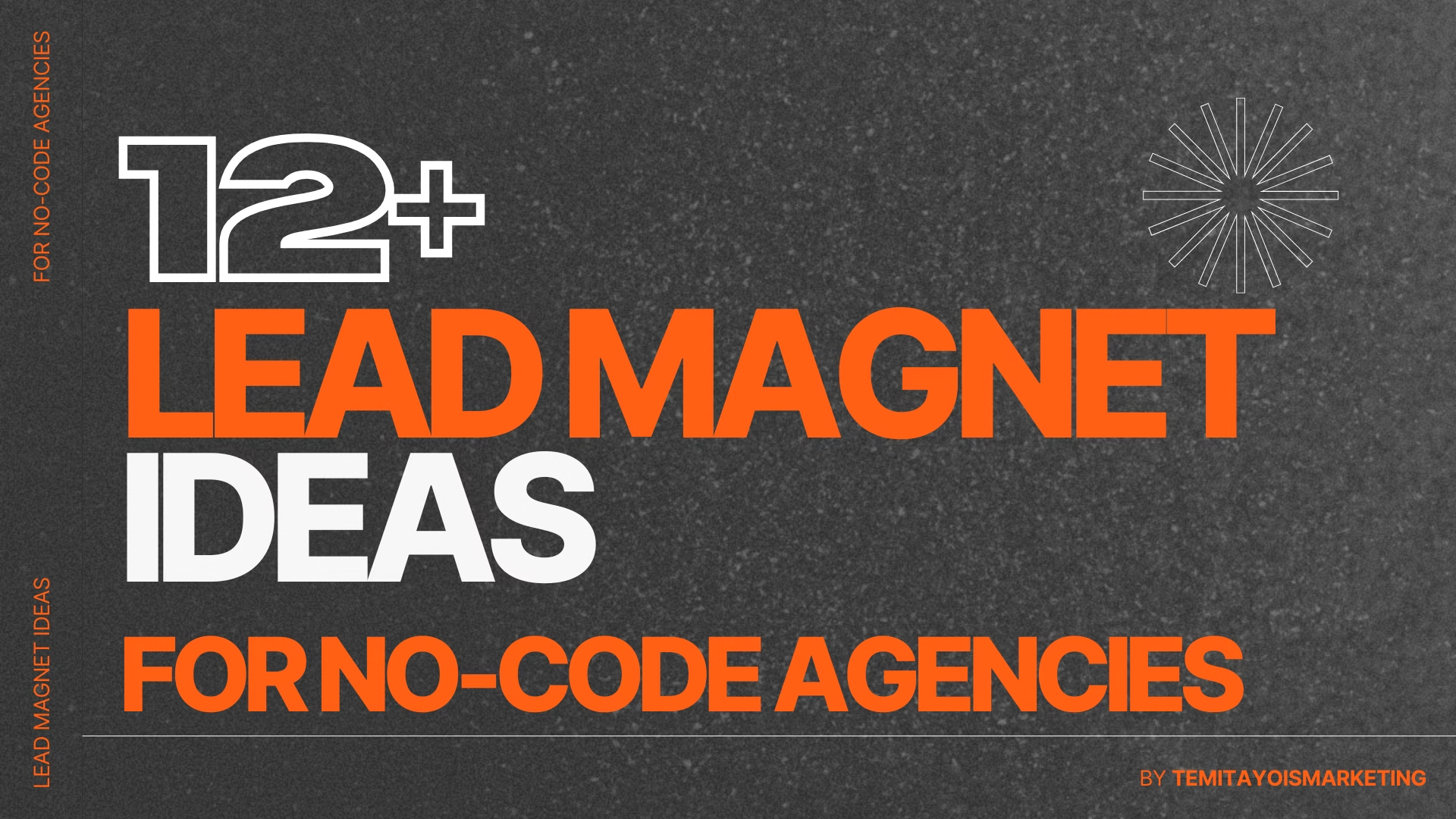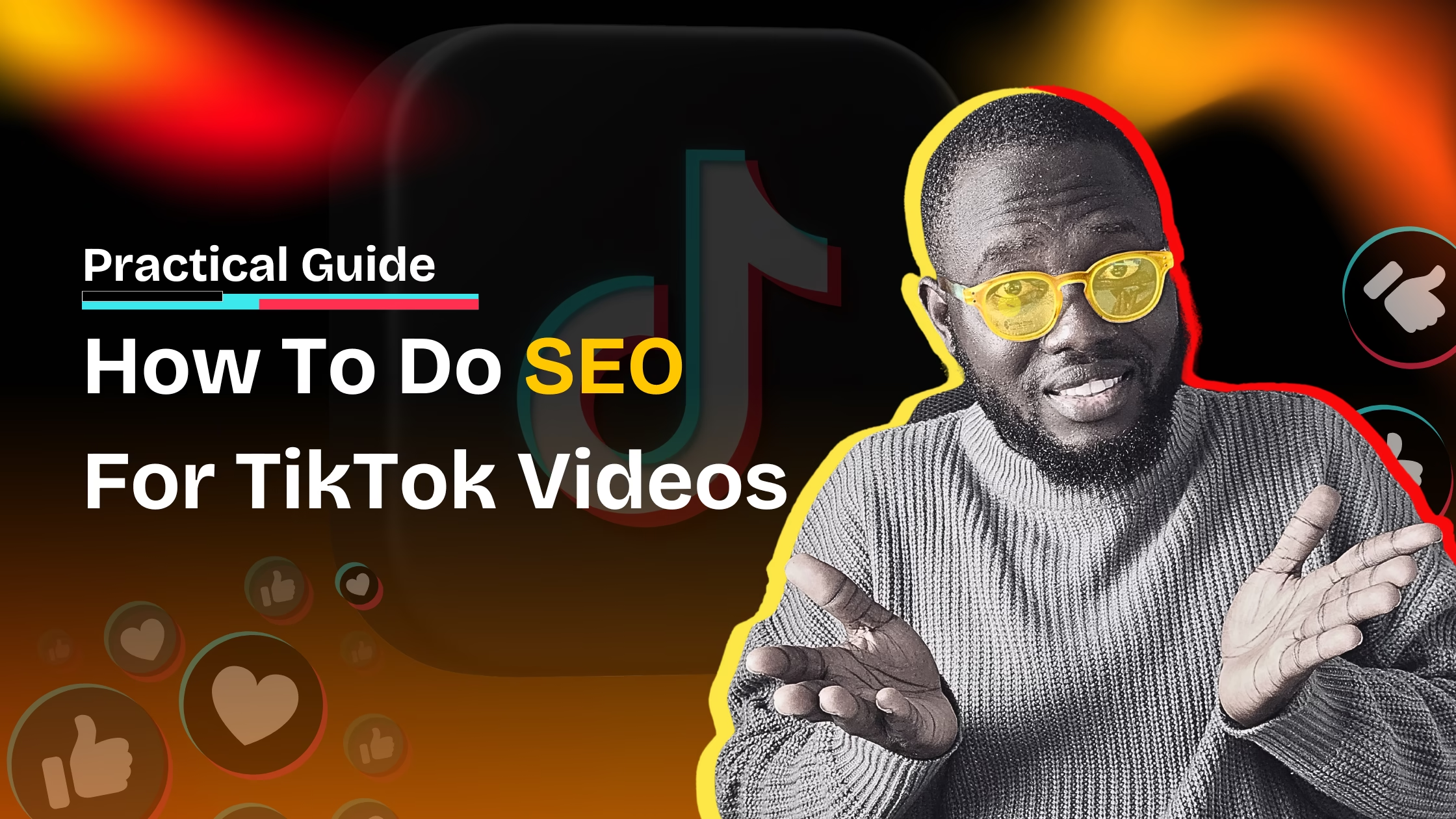Introduction
If you’re an agency owner looking to land more clients, email marketing is one of the most effective (and scalable) strategies out there, as I’ve seen first-hand how thousands of agencies utilize email marketing to achieve astounding success in client acquisition.
In this short but detailed guide, I’ll walk you through email marketing for agencies, the best email marketing platforms in 2025, how to set up your system step-by-step, and proven strategies used by successful creative and web design agencies to drive client acquisition and retention.
So, if you’re just getting started or looking to scale your campaigns, this guide is built to help you choose the right tools and get the most out of your email marketing efforts.
What You’ll Learn:
– Why email marketing works for agencies in 2025
– Top email marketing tools for agencies (with pros, cons, pricing)
– How to set up your agency’s email marketing from scratch
– Automation workflows that convert leads into clients
– Email sequences every agency should have
But first, let’s discuss the key benefits of email marketing and how it helps in activities like lead generation & client acquisition.
Key Benefits Of Email Marketing For Agencies
Here are a few reasons why email marketing should be a core part of your strategy as an agency owner.
01. Your Potential Clients Actively Use Email
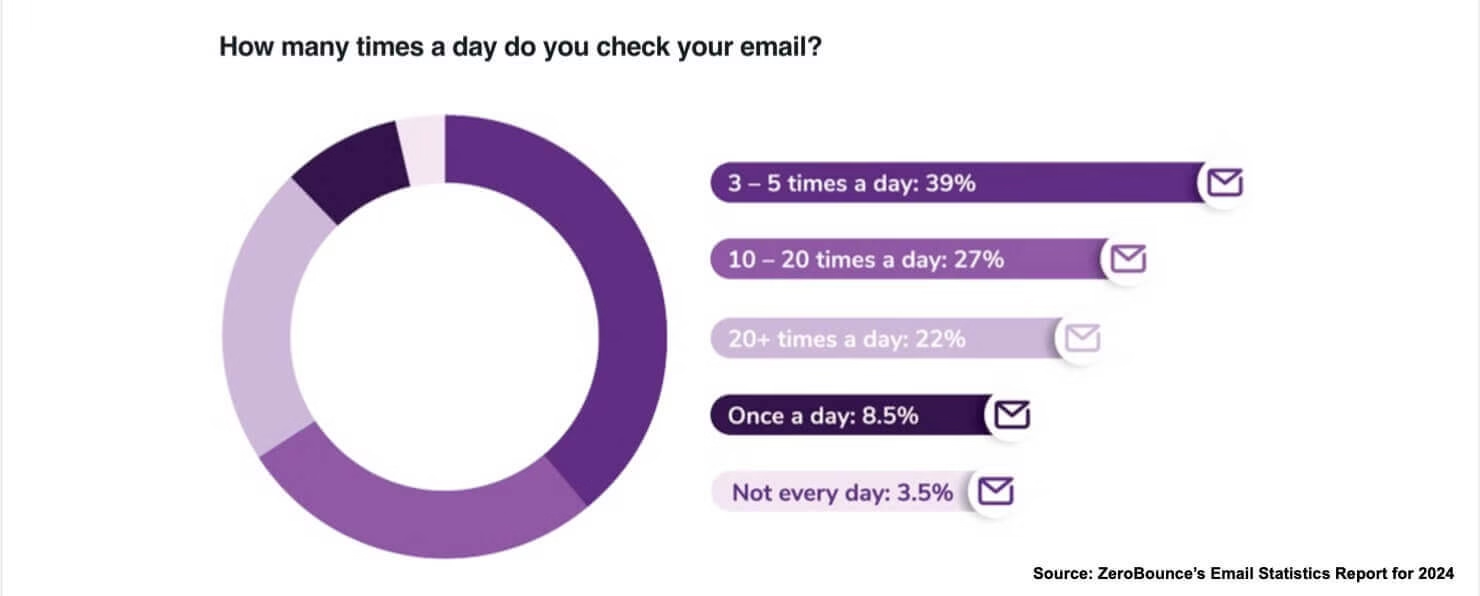
According to Optinmonster, a staggering 88% of users check their email multiple times a day, and 39% check 3–5 times daily.
For agencies, this means email marketing is one of the most effective ways to generate new leads, reach prospects, and engage current clients.
02. Proven Performance & ROI
Recent research shows that email marketing gives 3600% ROI, which is equivalent to $36 for every $1 spent, with some estimates going as high as 4200%.
This is relatively high compared to social influencer marketing, which delivers only $5.20 for every $1 spent
Using email marketing for your agency provides measurable and scalable outcomes that can easily be compared to industry standards,
With Some Email Marketing ROI Benchmarks by Industry Being:
- 32:1 for media, publishing, events, sports, & entertainment businesses (3200%)
- 36:1 for businesses in software & technology (3600%)
- 42:1 for Marketing, PR, and advertising agencies (4,200%), and
- 45:1 for retail, e-commerce, & consumer goods business (4500%)
Related:
2. Litmus: CMO’s Guide To Email Marketing ROI
3. Email Marketing Stastistics, 2025
03. A Rapidly Growing Audience
Nearly 4.5 billion people use email worldwide in 2025, a growth from 4.3 billion in 2023, and the number is projected to reach over 4.8 billion by 2027.
For agencies, this growth means a continuously widening pool of potential leads, clients, and subscribers.
The more people using emails, the more opportunities your agency has to build lists, segment audiences, and personalize communication at scale.
04. Hyper-Personalized Marketing
Imagine showing an ad about the different pricing tiers of your agency services to a web searcher who’s just trying to find out if their business needs web design services
Or showing a paid social ad that you build “no-code web and mobile apps” to a prospect who’s actively looking for a comparison between no-code and custom-coded app pricing.
That’s an unpersonalized message to the wrong audience.
Compared to other marketing channels like social media, paid advertising, influencer campaigns, or even SEO, only email marketing allows you to communicate with leads, prospects, and existing clients based on the data you have on them.
For example:
- HubSpot lets you tailor communication based on the pages someone visits on your agency website.
That means you can trigger an email sequence when a prospect visits your pricing page (and is likely considering your rates), or send an email explaining your Unique Service Proposition to prospects exploring your services pages.
- GetResponse allows you to segment customers based on loyalty and how they’ve engaged with your brand.
- MailChimp lets you connect with customers based on their purchase history, preferred communication methods, and more.
How To Set Up Email Marketing For Your Agency- In 3 Simple Steps
The 3 key steps to setting up email marketing for your agency include:
1. Choosing the best email marketing platform for your agency
2. Setting up a professional email domain and domain authentication, and
3. Building an email list of clients, prospects and cold outreach lists
Step 1: Choosing The Best Email Marketing Platform For Your Agency
In a later section, we’ll highlight a few top tools for email marketing for agencies, compare them based on the criteria mentioned below, and explain when to use each.
However, for now, to choose the best email marketing platform for your agency, consider this checklist:
1. Segmentation and Personalization: For example, HubSpot, while pricey, offers some of the best segmentation and personalization features I’ve seen.
2. Ease of Use: Make sure the platform is easy to use, especially if you’re planning to handle things in-house or DIY.
3. CRM Integration: Check if the platform integrates with a CRM. HubSpot has an inbuilt CRM system, while GetResponse integrates via Zapier.
4. Automation: Ensure the platform supports automation or integrates with tools like Zapier for automated workflows.
5. Pricing: Confirm that the pricing structure scales with your agency’s needs as you grow.
6. Analytics: Make sure the platform provides comprehensive analytics and performance tracking to measure your email success.
7. Support: Finally, check if the platform offers reliable customer support to assist with any issues.
Step 2: Setting up a professional email domain and domain authentication.
In setting up your professional email so that when you send out a campaign, it sends from name@yourwebsite.com instead of name@gmail.com, you’re required to set up three records known as the SPF, DKIM and DMARC.
SPF is a DNS record that lists the IP addresses authorized to send emails on behalf of a domain
DKIM adds a digital signature to emails, verifying the sender’s identity and ensuring the email hasn’t been tampered with, and
DMARC builds on SPF and DKIM to provide a policy framework for handling emails that fail authentication checks.
It instructs email providers what to do with emails that fail SPF or DKIM authentication, such as rejecting them, marking them as spam, or simply allowing them to be delivered.
Step 3: Building An Email List Of Clients & Prospects
As a rule of thumb, the first thing you never want to do is buy an email list.
A purchased list is like shouting into a crowded room full of strangers who don’t care — awkward, ignored, and often flagged as spam.
Your email list is only as powerful as the quality of the contacts on it.
So, how do you build a high-quality list?
One of the most effective ways we’ve done this is by creating a lead magnet — offering valuable freebies like guides, templates, AI tools or mini-courses that solve real problems.
For Nerdheadz, a no-code web design agency I worked with, we noticed many potential clients were curious about the cost of building apps with no-code versus custom code.
So, we built an AI-powered no-code project estimator — a lead magnet that asks prospects questions about their project and sends them a personalised estimate of the time and cost to their email. This allowed us to collect high-quality contacts genuinely interested in the client’s services.
Email Automation: Types of Emails Agencies Should Send
Using our example of the no-code agency I worked with above, imagine a lead went through our lead magnet, already has an estimation of what it would take to build their dream app without coding.
What kind of emails or follow-ups will seal the deal and convert leads into clients?
Email automation involves using email marketing software to automatically send emails based on predefined triggers or conditions, like subscriber actions, lead magnet engagement or time intervals.
The idea is, your leads go through a personalized and timely communication sequence without manual effort
As a standard, these are the 4 types of emails I often set up for agencies I work with:
- Welcome Email Sequences- These introduce the agency to potential clients.
- Lead Nurturing Sequences – Educate potential clients who are now considering buying the agency service and nudge them towards making the purchase decision or join in meetings with sales personnels.
- Client Onboarding Emails -These reinforce their decision to work with the agency, set expectations, and introduce parallel services the agency offers.
- Monthly Newsletters -showcases work, case studies, testimonials, company awards and industry insights.
And perhaps for the lead generation processes, you may set up sequences for cold outreach emails…
- Cold Outreach Emails -to help you generate new leads who didn’t come through the lead magnet.
3 Best Email Marketing Software For Agencies In 2025
We’ll be utilizing some of the criteria listed earlier for selecting the best email marketing tools
Email Marketing Tool 1: Hubspot
Hubspot is best for all-in-one automation and crm integration and is at the top of my list, due to its highly customizable interface and being ideal for agencies that cater for different business types.

Pricing: Starts at $20/Month For Hubspot Starter but scales super fast!
Best for: Agencies that want advanced segmentation, automation, and CRM in one tool.
When to use: You’re a growing agency that wants everything (CRM, email, landing pages, automations) in one place, and you can justify the price
| Features | Details |
|---|---|
| Segmentation & Personalization | Extremely robust. Hubspot allows for segmentation by behavior, page views, lifecycle stage |
| CRM Integration | Hubspot has a built-in CRM system |
| Ease of Use | Steeper learning curve for beginners |
| Automation | Advanced workflows, lead scoring, nurturing |
| Pricing | Expensive (starts free, then scales fast) |
| Analytics | Deep reporting capabilities |
| Support | Email, chat, knowledge base, community |
Email Marketing Tool 2: GetResponse
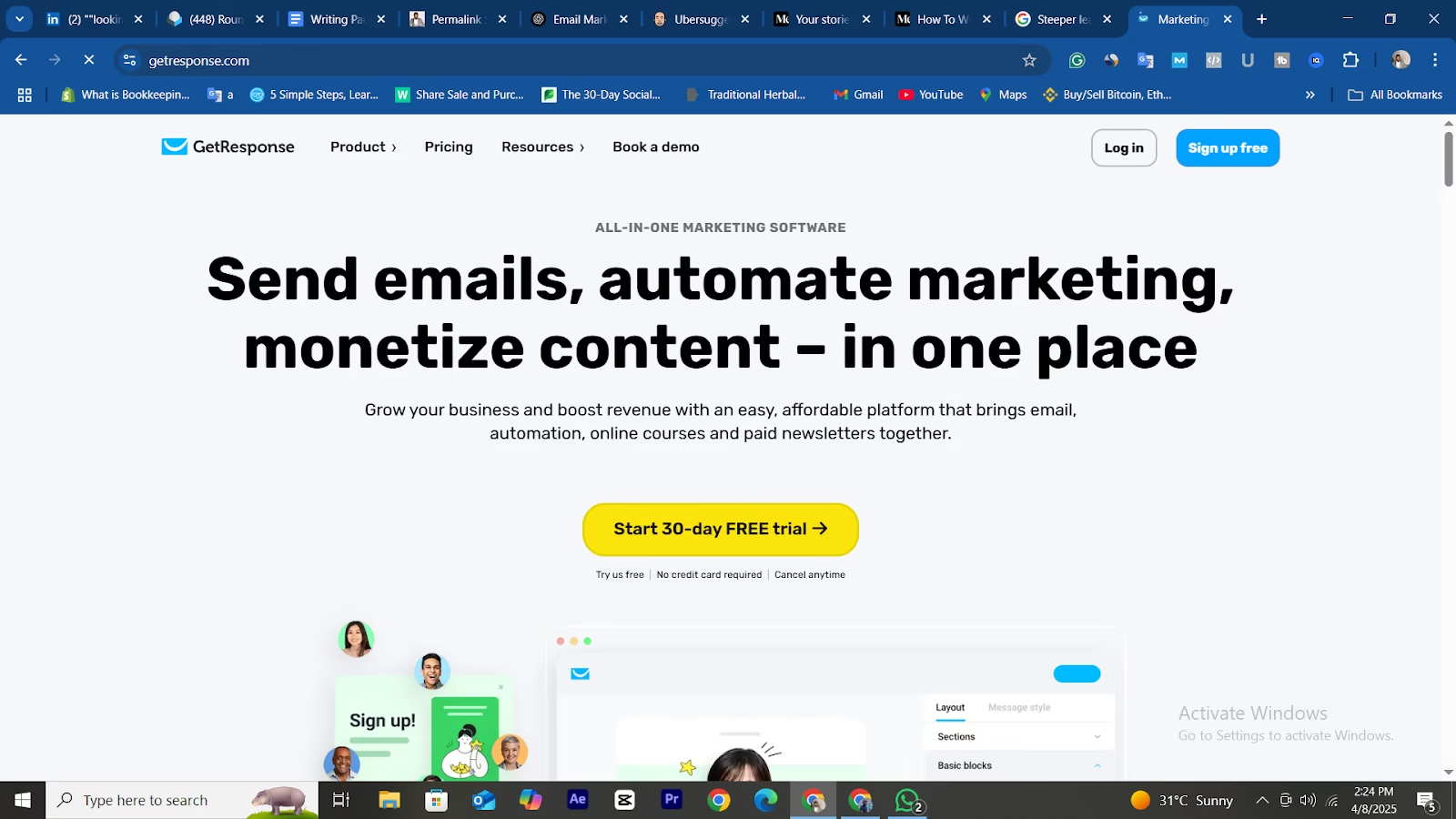
Best for: GetResponse is best for medium-sized agencies looking for an affordable automation-first platform.
Pricing: GetResponse starts at $19/Month and has a very transparent pricing system.
When to use: Use GetResponse when you want solid automation without paying premium prices — and already use a separate CRM.
| Features | Details |
|---|---|
| Segmentation & Personalization | GetResponse allows behavior and engagement-based segmentation |
| CRM Integration | Via Zapier |
| Ease of Use | GetResponse has a beginner-friendly UI |
| Automation | Pre-built workflows and drag-and-drop builder |
| Pricing | More affordable than Hubspot |
| Analytics | Covers all the basics |
| Support | 24/7 live chat and email support |
Email Marketing Tool 3: MailChimp
MailChimp is arguably the most popular email marketing software, holding a significant share of the online marketing space.
Best for: Freelancers and small agencies just getting started.
Pricing: MailChimp premium starts at $20/Month for 500 contacts
When to use: When you need a user-friendly starter tool with enough features to launch and test campaigns quickly.
| Features | Details |
|---|---|
| Segmentation & Personalization | MailChimp provides simple but useful tags & groups |
| CRM Integration | Integrates with most tools (via Zapier or native) |
| Ease of Use | Very intuitive and user-friendly |
| Automation | Includes basic automations like welcome and abandoned cart |
| Pricing | Free tier available, but with MailChimp branding; with affordable paid plans |
| Analytics | Includes reports on open rates, clicks, A/B tests |
| Support | Limited on free plan; live chat on paid tiers |
Other Tools To Do Email Marketing For Agencies
| Email Marketing Tool | Best For | Why Use It |
|---|---|---|
| ConvertKit | Personal brands, creator agencies | Simplicity + strong automation for creators |
| ActiveCampaign | Advanced users | Deep automations and CRM + great for behavior-based flows |
| Moosend | Budget-conscious teams | Affordable pricing + modern UI |
| MailerLite | Lean teams & simple workflows | Great balance of simplicity and functionality |
How to Get It Right: Best Practices & Common Mistakes in Email Marketing for Agencies
To succeed at email marketing for your agency, especially if you’re DIY or a scaling agency, these are some Do’s and Don’ts I live by and have used for past clients
1. Craft compelling subject lines
Your subject line is the first impression and decides if recipients, leads or prospects will open your email—keep it clear, benefit-driven, and under 50 characters.
I try to use action words or curiosity-driven triggers to increase open rates.
2. Personalization tactics that work
Go beyond first names or Dear *|FNAME|*. Try to reference specific services, industries, or past interactions the customer has had with your business, web pages, etc, to make your emails feel human and relevant.
3. Optimize email deliverability (avoid spam filters)
As advised above, authenticate your domain, avoid spammy & sales words, and maintain a clean email list.
Use a reputable email service to stay out of the junk folder.
5. Best times to send agency emails
As my field is primarily B2B, I prefer to send emails between Tuesdays to Thursdays, mid-morning or early afternoon, as they tend to perform best.
However, automated sequences won’t necessarily follow these days and you should always test and optimize based on your audience’s behavior.
What are some Common Pitfalls I’ve Seen Regarding Email Marketing For Agencies
6. Overloading emails with too much information
A cluttered email overwhelms readers.
If you try to talk about all your awards, services, case studies and expertise in one single email, you overwhelm the reader
I make it a point to stick to one message, one goal, and one clear action.
7. Ignoring segmentation and personalization
Blasting the same message to your whole list feels generic.
Segment by interests, roles, pages engaged with, frequency of engagement or behaviors for better results.
8. Not optimizing for mobile
Over 50% of emails are opened on mobile. If your message isn’t mobile-friendly, it’s getting deleted.
9. Sending without a clear CTA
Every email you send should guide your reader toward a single next step or action.
It could be forwarding your email to one person, sending you a reply or clicking to download a resource.
This teaches your customer to learn how to take action- which eventually would be a purchase action at some point in time- when they read your emails
Without a clear CTA, you’re just adding to their inbox noise.
Email Marketing Strategies & Measuring Email Marketing Success For Your Agency
When it comes to email marketing for agencies, knowing what success looks like starts with tracking the right metrics. The key performance indicators (KPIs) to monitor would include:
1. Your email Open rates
2. Your Click-through rate (CTR)
3. Your Conversions
Tracking Your Email Open Rates
Your email open rate is often the first sign of engagement and is influenced by several factors:
- Subject Line – Is it intriguing enough to earn a click?
- Inbox Competition – How crowded is your recipient’s inbox?
- Send Time – Are you catching them at the right moment?
- Brand Affinity – Do they know and trust your agency?
To optimize open rates, agencies must write super-compelling subject lines.
Go beyond generic subject lines written with AI. Inject curiosity, personalization, urgency, or value.
You might also consider asking subscribers if they have a dedicated mailbox for important emails—or even better, ask which inbox they’d prefer your updates to land in.
Also, let your subscribers choose their email frequency.
A simple preference center can drastically reduce unsubscribes and improve engagement.
Additionally, you can analyze historical data to find the best-performing send times for your audience.
And never underestimate brand love.
The more familiar and respected your agency is, the more likely people are to look forward to your emails. Trust often translates into email opens.
A/B Testing: Test, Learn, Optimize
If there’s anything I’ve learnt while running email marketing for agencies, no matter how good your emails are, you can always improve them with smart A/B testing.
The rule of thumb is to test one variable at a time. That could be:
- The subject line
- The body copy
- The call-to-action (CTA)
- Even the sender name
Here’s a simple method I always use:
- Use 20–30% of your list as the test group (don’t forget to test only one variable at a time)
- Send two variants (Version A and B), and send the winning version to the remaining 70–80%.
This way, you’re always learning and scaling what works.
Measuring Your Click-Through Rate (CTR):
Your click-through rate tells you how well your email drives action.
This means the biggest determinant is your EMAIL BODY COPY.
If your message isn’t clear, persuasive, and emotionally resonant, your links won’t get clicked. In a nutshell, make sure your copy has:
- A strong hook
- Clear benefits
- Easy-to-spot CTA buttons or links
- Mobile optimization
But most importantly, make sure it’s sent to the right audience segment so that it’s relevant
Don’t forget: the design and structure of the email also influence CTR—so keep things skimmable, visual, and action-driven.
Tools For Measuring Your Email Performance
Ultimately, all emails are created to convert—whether it’s signing up, booking a call, downloading a lead magnet, or making a purchase.
Most email tools already provide internal tracking systems for open rate, CTR, and reporting on A/B testing. However, to track conversions:
- You can utilize Google Analytics (UTM-tagged URLs to track user actions on your site) for goal tracking and user behavior after the click
- You can track engagement via your CRM (such as Hubspot CRM) or marketing automation platform
- You can use Mailmodo, Litmus, or Email on Acid – For testing email renderings across devices
- You can use Hotjar or Microsoft Clarity to monitor post-click behavior on your landing pages, and finally
- HubSpot or Salesforce – also provide systems for lead scoring and full funnel tracking
Conclusion
Email marketing will always remain one of the most powerful channels for agencies to generate leads, nurture prospects, and turn interested visitors into loyal clients.
So, whether you’re just starting in email marketing or refining your agency’s client acquisition systems, choosing the right tools and setting up automated workflows will help you grow faster, smarter, and with greater predictability.
Start with the strategies above, test what works best for your audience, and iterate—because when done right, email doesn’t just drive engagement, it drives business.
If you need help executing or setting up email marketing for your agency, reach out here



